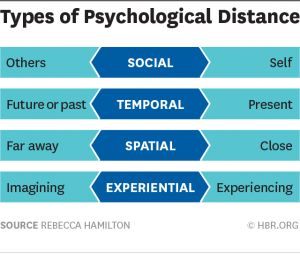As we begin to wind down our business lives for the holiday season and focus on next year, I am continuing a tradition I started 2 years ago, with a wish for peace and understanding between us during the holidays and into the new year.
In this spirit, I am sharing a blog written by Linda N. Edelstein, Ph.D., Clinical Psychologist, Author, Professor.
Repairing the Ties that Bind
The divisions among us seem to increase daily. How do we begin to heal? How do we enter our festivities with goodwill toward all, not just toward the folks who think like we do? Since the 2016 primaries, as psychologists and psychiatrists, we have listened to people voice innumerable variations of, “I can’t talk to ….” People solve this problem differently; some opt to spend less time with family; some determinedly keep the conversation away from political and social issues; others are baffled that their family’s values of charity and religious principles co-exist with policies that lack empathy. And, then inevitably, because most people long for closeness with family and friends, we are quietly, seriously asked, “How can I talk with people who hold dramatically different values than I do” (pause) “without losing my mind?”
Our writing comes from efforts to understand the psychology of today’s politics and compile practical strategies to use. Reality might not feel friendly right now, but it is all we have. So, let go of the wishes, assumptions and expectations that you will succeed in converting people to your political point of view.
Consider a different approach. People are not coming to holiday gatherings to have their minds changed so, let’s pause in our desires to win people over to a different point of view. Let’s temporarily stop trying to find better arguments. Instead, let’s step back during the holidays and begin with engagement rather than challenge, connection rather than persuasion. Let’s simply be friendly, not to persuade but to fortify bonds that have been worn thin.
Here we go………………
● Set your frame of mind. Before you walk into a home or meeting room, set your mind to be welcoming and respectful, not neutral and certainly not hostile. Consider: You will be inviting people to share their thoughts. You will not chase anyone down or pound them with statistics.
● Listen hard. Try to understand where they are coming from. Listening is active, requires attention, and is far more difficult than talking. It is an openness to understanding another person and does not imply agreement. Consider: Don’t judge; don’t bite your tongue waiting for your turn. Just listen. Display interest. If you are uncertain, ask for clarification, “Can you say more about that?” “Do you have an example?” Use questions to increase your comprehension, not to set a trap. People long to be heard and will appreciate your time and attention.
● People have a worldview. What is the core value they are speaking about – is it Liberty? Freedom? Empathy? For example, “Everyone should own guns” isn’t just about gun ownership. Consider: The sentiment may be about feeling helpless and wanting more power. If so, respond to that, “You want to know that you can protect yourself.”
● Listen for facts and feelings. Conversations contain both, whether you’re in a group of 4 or 100. Groups are more difficult to assess because multiple points of view exist simultaneously, but there will be an emotional tone. Consider: You can respond to facts, “You didn’t get the job you wanted” or feelings, “You’re upset/angry/disappointed that you were overlooked.” For extra information, attend to body language and eye contact.
● Appreciate the power of belonging. Values are at our core and lead us to groups where we feel we belong. To change our beliefs is to risk losing our group membership, whether that is a family, political party, or religion. Consider: When you ask people to change their ideas, it can be a wrenching loss. People come to decisions when they are ready.
● Cultivate compassion. It may not help anyone else in the room, but it will do wonders for you. Compassion softens your anger and judgments. We are more similar than different; we all have insecurities, want protection from pain, and desire to belong.
● Don’t be defensive. We saved the hardest for last, but heated conversations are helped by listening first and being sure you understand the other point of view before you defend yourself, your view, or your behavior. And maybe you don’t need your turn; understanding might just be satisfying enough. We live in contentious times that have strained our ties with each other. Healing will not come from the top; it has to come from us – in whatever ways we can manage to reconnect with our families and organizations. Listening is a powerful first step. Making a concerted effort to connect and listen leaves us less overwhelmed, less isolated, and increasingly hopeful that every individual effort makes a difference.
So give it a try. It’ll be the best gift you give and receive this holiday season.
P.S. This is the last post this year, see you back here in January.
Why Vistage Works
Elisa K. Spain


 The initial results of my Pivot are excellent. I feel I have much greater clarity regarding the next 3-5 years..
The initial results of my Pivot are excellent. I feel I have much greater clarity regarding the next 3-5 years..  John Yerger
John Yerger